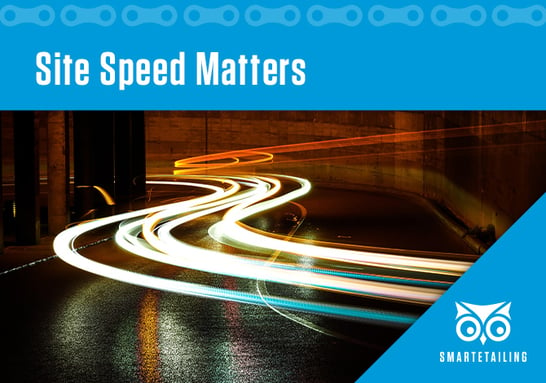
The pace of retail, much like the pace of life, keeps getting faster. To attract local customers through organic web searches, a fast website is essential.
Search engine optimization (SEO) is the process of increasing your website’s visibility for relevant searches. The better visibility your pages have in search results, the more likely you are to gain attention and attract prospective and existing customers to your business.
SEO is a fundamental part of digital marketing because shoppers search for virtually every product they buy. Organic search is often the primary source of digital traffic for bike shops.
Google includes speed as one of the signals used by its algorithm to rank pages. In addition, a slow site speed means that search engines can crawl fewer pages using their allocated time to scan (crawl) your website, and this could negatively affect your indexation.
SmartEtailing is in the business of helping you win your local market. We want you to be well informed about SEO and how to improve it.
Keep your homepage clean
The more elements a web browser needs to load in order to display a page to a visitor - the more time it takes for shoppers to see your content.
SmartEtailing makes it easy to add several content sections to every page so it requires discipline to avoid overloading a page. Always consider whether the content you are adding has evergreen or point-in-time value.
If the amount of evergreen content adds up, consider working with our marketing team for a homepage refresh where we can organize the content into an intuitive and fast layout.
For point-in-time content, consider using the content scheduling tool built into your website to ensure that the content disappears from your homepage when the point of maximum value is passed.
Optimize images to reduce file size
It is great to load your photos that you’ve taken from the shop to your website. It creates a more unique feel and doesn’t rely on the stock photography provided by brands.
However, when you take a photo on your nice camera or even your smartphone, there is a whole bunch of data that gets attached to the image file. Data about when the picture was taken, GPS coordinates, and other metadata about the type of camera being used.
No one looking at these photos needs to know this information. So there is no need to include it. Use an image optimization tool to strip this metadata which will vastly reduce the file size of the image.
Another thing to note is that these images are huge. You could print them safely at the size of a billboard without any loss in quality (maybe not, but you get the idea). You’ll never need an image that large on a computer or phone, no matter how big the screen.
So use those same image optimization tools to reduce the size of your image to a width of 2000 pixels or less. If you know you only have to fill a 300 pixel wide space, then reduce to 300 pixels. The smaller the photo, the smaller the file size, the less work is needed to load it.
Reduce unnecessary code and add-ons
There are a lot of great tools out there that you can add to your website to improve experiences for your customer. However, be wary because many of these add-ons are poorly created and drastically slow down the load time of your site as a result.
Again, if you notice a slow load time, these add-ons could be a cause. If you are concerned that the add-on that you are putting on your site might slow things down, don’t hesitate to reach out to us and ask. We’ve seen a lot of poorly coded tools that slow your site to a crawl. We can help steer you clear of the nasty ones.
Some add-ons that slow site speed are commonly related to email sign-ups, data & event tracking tools, and, believe or not, tools touted by SEO companies to improve your SEO.
If you are noticing slow load times, have a professional assess what it is on your site that could be causing this.
About speed testing tools
Several tools measure page speed such as Google's PageSpeed Insights, Pingdom, and Moz. For what you need to focus on, these often hone in on incredibly specific things that only an advanced developer would understand.
Fortunately, we have a whole team of software developers working on just that.
So when you see recommendations from these tools suggesting you improve the “cumulative layout shift” and to “eliminate render-blocking resources” don’t worry. These incredibly specific suggestions won't have an impact on your website's ability to rank on Google.
Google’s robots are going to notice a millisecond difference from extremely technical issues. Humans will notice if it takes more than 5 seconds.
Another note about these tools, Google’s in particular, is that they often report areas of improvement because they are constantly pushing content creators to move faster and faster. To a non-developer, these tools are often useless.
The rule of thumb is that if you open your site from your desktop and/or phone and notice a discernibly slow load time, then there is something that needs to be done. If you need help, let us know so we can assist.

Comments